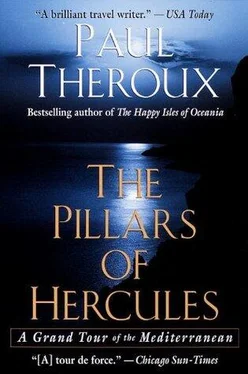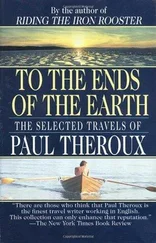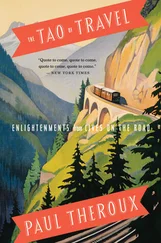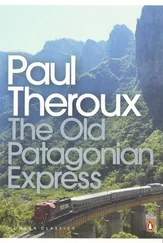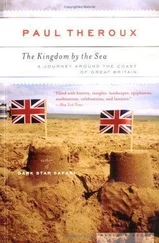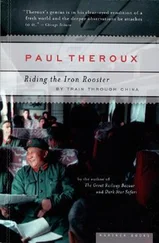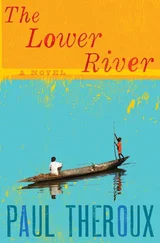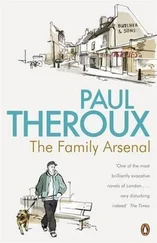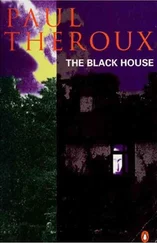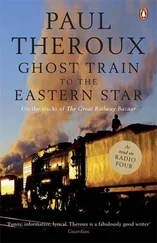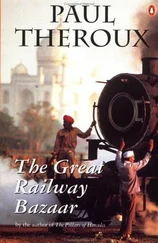But several aspects of this reeking vulgarity interested me. The first was that the debased urbanization on this coast seemed entirely foreign, as though the whole holiday business had been foisted on Spain by outside investors hoping to cash in. The phenomenon of seaside gimcrackery was familiar to anyone who had traveled on the British coast and examined The Kingdom by the Sea. Spain even had the same obscene comic postcards, and funny hats, and junk food. It was also ridiculously cheap, in spite of the retirees’ complaints about the high cost of living. The Spaniards did not mock it, and they were grateful for the paying guests; for many years this was the chief source of Spanish prosperity. It was also remarkably ugly, and this was especially true in these out-of-season months. In full sunshine it might have had a cheap and cheerful carnival atmosphere, but under gray skies it hovered, a grotesque malignancy, sad and horrible, that was somewhere between tragedy and farce. And Spain seemed distant.
I felt intensely that the Spanish coast, especially here on the Costa del Sol, had undergone a powerful colonization — of a modern kind, but just as pernicious and permanent a violation as the classic wog-bashing sort. It had robbed the shore of its natural features, displaced headlands and gullies and harbors with futile badly made structures. It did not repel me. It showed what unruly people were allowed to do to a magnificent shoreline when they had a little money and no taste. It had a definite horror-interest.
The landscape was obliterated, and from the edge of the Mediterranean to the arid gravelly inland slopes there were off-white stucco villas. There were no hills to speak of, only sequences of stucco rising in a hill shape, like a collapsing wedding cake. There were no people, there were few cars, and after dark only a handful of these houses were lighted. In the poorer nastier coves there were campsite communities and the footprint foundations in cement for caravans and tents.
A poisonous landfill, a dump with a prospect of the sea, dominated Fuengirola, which was otherwise just high-rises and huts. Ugly little towns such as Arroyo de la Miel sometimes had the prettiest names — in that case Honey Gulch — but the worst indication of blight on this coast was the gradual appearance of signs in English: “Cold Beer” and “Afternoon Tea” and “Authentic English Breakfast” and “Fish and Chips”—and little flapping Union Jacks. They were also the hint that we were nearing Torremolinos, which was grim and empty and dismal and sunless, loud music mingled with the stink of frying, souvenir letter openers and ashtrays and stuffed animals and funny hats stacked on a narrow strip of gray sand by the slop of the sea.
There were some tourists here — British, French, German — making the best of things, praying for the sun to shine. Instead of staying I found a train and took it back to Fuengirola, which was just as awful as Torremolinos. That night strolling along the promenade — the sea was lovelier at night — I saw a bullfight poster, announcing a feria the next day at Mijas, not far away.
There was a bullfight on television in a cafe near my hotel that night. The cafe was filled with silent men, smoking cigarettes and sipping coffee. A few disgusted tourists left. I watched for a while with these attentive Spaniards. It seemed just a bloody charade of ritual slaughter, a great black beast with magnificent horns trotting around the ring, snorting and pawing and full of life, reduced in minutes to a kneeling wreck, vomiting blood, as a narrow-hipped matador gloated — this was something that made me deeply curious, even as it filled me with dread.
I went to Mijas and took a seat in the bullring. It was a novillada, a bullfight with young bulls. The matadors here were also young — trainees (novilleros) —nervous, tentative teenagers. One walked out stiffly in tight pants. People cheered. The bull appeared from a gate. It was a small bull, because the matador was still learning; but even so this beautiful bewildered animal made him look like a punk. Attempting to be fearless, the matador knelt and was almost immediately gored. He tumbled, the bull was on top of him. The cape-men distracted the bull and after a while stuck banderillas into the bull’s neck. This tore the neck muscles, the bull lowered its head — an easy target. The matador made an attempt with his sword, but so badly the bull was crazed — surprised, fearful, fighting for its life — and chased the matador into a blind. Confused, dying, the bull bled against its own flanks for a while and then, weak and kneeling, was dispatched with a sword thrust, and the dead thing was dragged away by a mule team.
This was all worse, more farcical, more horrible than I had imagined, because it was so inefficient. People cheered, but pointlessly — the bull was doomed from the start. The bullring is round: there is nowhere for the bull to hide; but the “blinds” allow the matador to hide with ease.
The second bull was less lucky — though all bulls are unlucky — and ended up howling, bellowing as the matador fumbled with the sword and cape. He was butted. The bull was bleeding and roaring. At last the bull was stabbed. At this point about fifteen English tourists left the bullring, muttering with indignation. A third bull entered. A new matador faced this creature and was downed inside a minute. He tried three times to stab this bull, but succeeded only in enraging him. He was gored and limping. He lost his cape. He then stabbed the bull, but ineptly, skewering the bull so grotesquely that the animal was given courage, and it cantered around, bleeding and complaining, with the sword bobbing from its neck. The Mijas church bells tolled, and the pigeons flew out of the belfry, the matador was chased, there was great confusion, until at last the bull was slowly, amateurishly, painfully put to death.
There is nothing in bullfighting except blood — the anticipation of blood, the letting of blood, and the brutally choreographed death of a ramping animal which just a moment ago was bucking and snorting with life. It is the sight of terrible beauty victimized and killed, in style. The word matador is unsubtle. Matar is the verb to kill. Matador means killer. In the larger bullrings, the great corridas , the bulls are enormous, monstrous even, but in minutes, the bull is reduced to a slobbering, drooling wreck, shitting in alarm and desperation, and finally knifed to death. Olé.
The small bullring at Mijas, about the size of a circus ring at a state fair, was almost a century old. Mijas, a lovely town in the hills above Fuengirola, is the scene of In Hiding , by Ronald Fraser, which describes how the Republican mayor of Mijas was forced to remain hidden in his house for thirty years; a good example of the absurd cruelties brought about by the Franco government, which by the way encouraged bullfighting.
Bullfights are as frequent on Spanish television as football games. It is not unusual to find them on three channels simultaneously, three different bullfights. Spaniards, not a people noted for finding common agreement on anything, are almost unanimous in their enthusiasm for bullfighting. It is not a sport, Hemingway said; it is a tragedy, because the bull dies. But the bull dies in the worst possible way, first tortured by knives in its neck and then stabbed — usually clumsily by a prancing man with a sword — and then it bleeds to death.
A tragedy? Isn’t it pretty to think so. It is certainly not a sport. It is a gruesome entertainment, on a par with bear-baiting or the exquisitely nasty Chinese “Death of a Thousand Cuts.” It is a cruel farce, and since cheating is involved (shaving the bull’s horns, drugging the animal), often it is no more than a charade, just a gory spectacle. It woke in me an unholy pleasure at the prospect of seeing a matador gored.
Читать дальше
